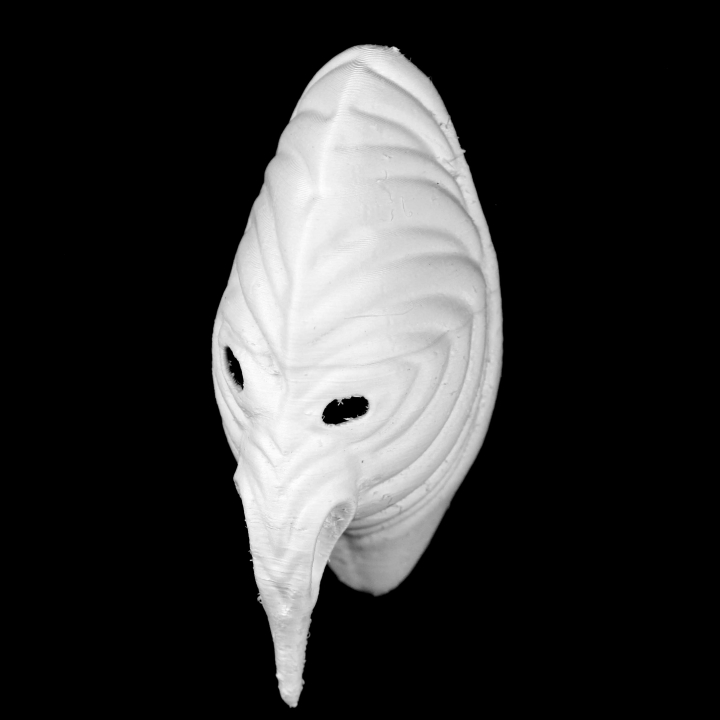
Mask at Quai Branly, Paris
myminifactory
The mask conceals as much as it reveals, hiding secrets from those who should remain uninformed, as Claude Lévi-Strauss once stated. Often the keeper of a secret, the mask keeps hidden that which only insiders are meant to know. Its power also lies in its ability to embody spirits, forging a link between humans and their ancestors, between the visible and invisible worlds. It is inseparable from a mythical context that shapes the way people live and think in most traditional societies. At the heart of a group or community's life, the mask functions as an indispensable mediator, always actively at work. This mask was crafted by a skilled artist from Tambanum Village, renowned for its thriving wood carving industry. The masks were carved from softwood and adorned with paint made from natural pigments and charcoal. A dominant theme in Iatmul art is sculpture of the human form, particularly men. Masks like this one frequently feature exaggerated noses, which signify masculinity (women have shorter noses), and often allude to a clan's totems (entities that watch over or assist a group of people). Ancestor worship was fundamental to the Iatmul people, who believed that ancestral spirits hold power over those still living. In addition to ancestral spirits, the Iatmul believed in marsalai, or malevolent spirits (usually evil ones) that also impact the realm of the living. This mask represents a male bush marsalai called winjumbu, which has the ability to transform into a bird. Birds played a significant role in the mythologies of peoples along the Sepik River, and they were frequently featured in Iatmul art. A man would have worn this mask alongside an elaborate costume, mimicking a winjumbu's actions and character at ceremonies honoring rites-of-passage and special events. This mask originates from Papa New Guinea in the village of Hopmagum (north coast) and dates back to the beginning of the 20th Century. It is made of wood and shows signs of pigment. The masks of this region circulate, through exchange, between the north coast and the islands. While forms of reference remain, the length of the nose and oblique eyes vary stylistically from one group to another. This object is part of "Scan The World". Scan the World is a non-profit initiative introduced by MyMiniFactory, which aims to create a digital archive of fully 3D printable sculptures, artworks, and landmarks from across the globe for public access. Scan the World is an open-source community effort; if you have interesting items around you and would like to contribute, email stw@myminifactory.com to learn how you can help.
With this file you will be able to print Mask at Quai Branly, Paris with your 3D printer. Click on the button and save the file on your computer to work, edit or customize your design. You can also find more 3D designs for printers on Mask at Quai Branly, Paris.
